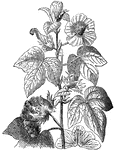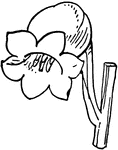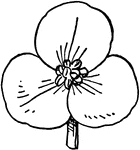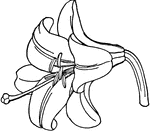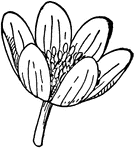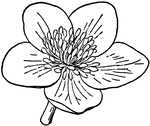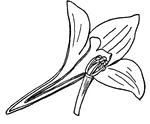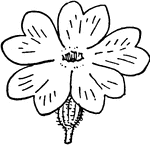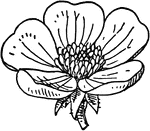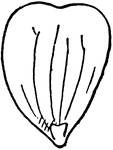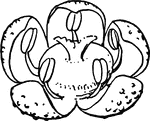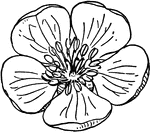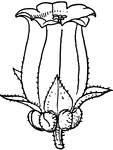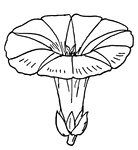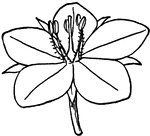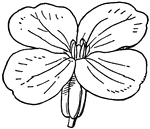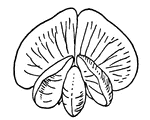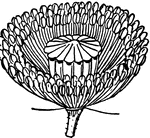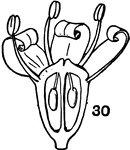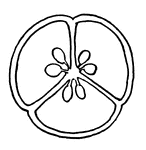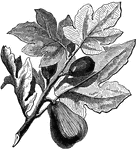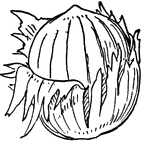
Papyrus
Papyrus reed that grows along the shores of the Nile. The stalks are pliable and capable of being interwoven…
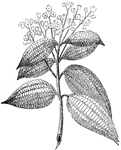
Cinnamon
The cinnamon plant. It is the inner bark of a tree growing about twenty feet high, and being peeled…
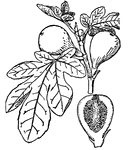
Fig
Any plant belonging to the genus Ficus is a fig. They are widely distributed in warm climates. Some…

Figwort
This illustration shows a Figwort, a member of the genus Scrophularia. It has the characteristic features…

New Zealand Flax (Flowers)
New Zealand Flax is a liliaceous plant bearing tough, radical leaves, usually about four feet in length.…

New Zealand Flax (Fruit)
New Zealand Flax is a liliaceous plant bearing tough, radical leaves, usually about four feet in length.…
Form of Stamen
This illustration shows a form of a stamen, the part of a flower that holds pollen for reproduction.

Form of Stamen
This illustration shows a form of a stamen, the part of a flower that holds pollen for reproduction.

Form of Stamen
This illustration shows a form of a stamen, the part of a flower that holds pollen for reproduction.
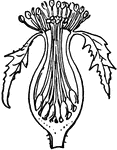
Perigynous Stamens
Stamens of a flower that surround the rim of a cup or tube that surrounds the ovary, but is not attached…
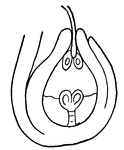
Fertilization (Flower)
This illustration shows the fertilization of a flower, by means of a pollen tube entering a micropyle,…

Fertilization (Flower)
This illustration shows fertilization of a flower, by means of pollen falling from stamens (male organ)…

Flowering Rush
A European plant which grows in stagnant or nearly stagnant water. It has long, sword-shaped leaves,…

Gentian
A genus of hardy plants, Gentians belong to the order Gentianaceae. They have a bitter taste, and one…

Geum Urbanum
Geum urbanum is a member of the genus Geum, a genus of hardy plants (Rosaceae). Not usually used decoratively,…

Ginger
Ginger is the dried rhizome of the tropical plant Zingiber officinale. It is used in cookery, because…

Glaux Maritima
Also known as Sea Milkwort, Glaux Maritima is a hardy perennial seashore plant belonging to the order…

British Golden-rod
British Golden-rod is a member of the large composite genus Solidago, which is chiefly North American.…

Inlaying (Grafting)
Grafting is a horticultural operation which consists in placing together the two cut surfaces of different…

Veneering (Grafting)
Grafting is a horticultural operation which consists in placing together the two cut surfaces of different…

In-Arching (Grafting)
Grafting is a horticultural operation which consists in placing together the two cut surfaces of different…
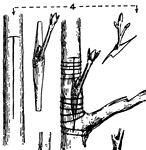
Side Grafting
Grafting is a horticultural operation which consists in placing together the two cut surfaces of different…

Crown Grafting
Grafting is a horticultural operation which consists in placing together the two cut surfaces of different…
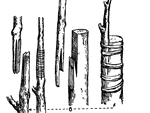
Whip Grafting
Grafting is a horticultural operation which consists in placing together the two cut surfaces of different…

Cleft Grafting
Grafting is a horticultural operation which consists in placing together the two cut surfaces of different…
Saddle Grafting
Grafting is a horticultural operation which consists in placing together the two cut surfaces of different…
Wedge Grafting
Grafting is a horticultural operation which consists in placing together the two cut surfaces of different…
